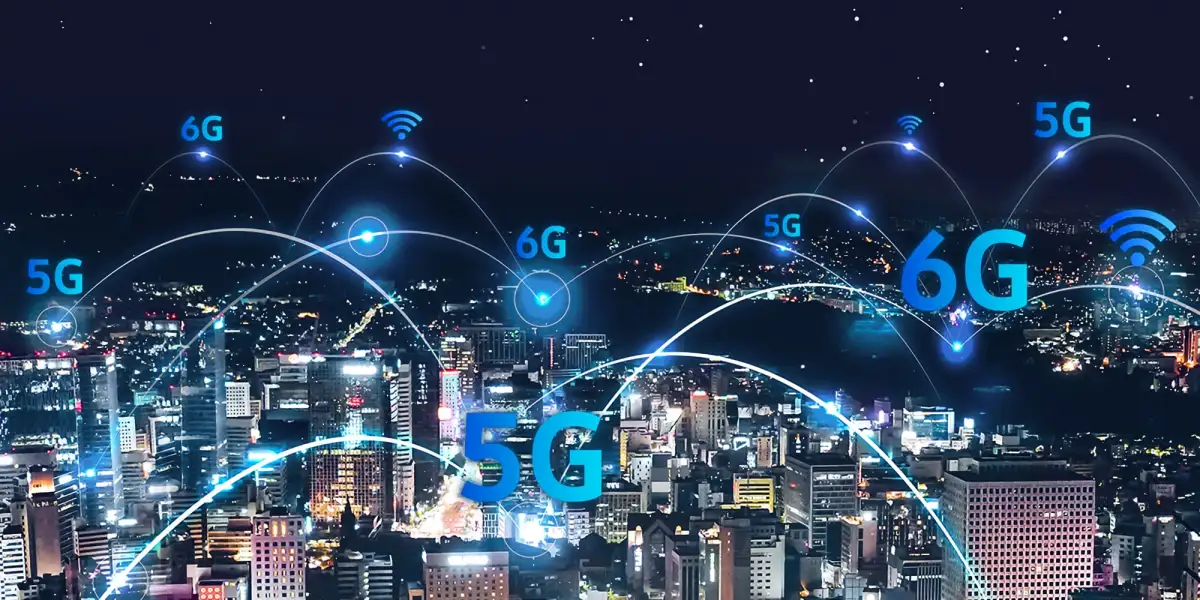Discover the groundbreaking 6G and 5G technology overview, including its advantages, features, deployment timeline, and comparisons. Transition into the future of wireless connectivity with insights on IoT advancements and the seamless transition from 5G to 6G.
Introduction
In the ever-evolving landscape of wireless technology, the emergence of 6G promises to revolutionize connectivity beyond our current standards. Building upon the foundations laid by its predecessor, 5G, 6G is poised to redefine the way we interact with the digital world. Let’s delve into the intricacies of 6G and its potential to shape our future.
Advantages of 6G
6G networks herald a new era of connectivity with their ability to operate at significantly higher frequencies than 5G. This translates to a substantial increase in capacity, ultra-low latency, and blazing-fast data rates. Imagine downloading movies in the blink of an eye or experiencing seamless virtual reality without any lag—all made possible by the advancements of 6G technology.
Technology Features
At the heart of 6G lies its utilization of signals at the higher end of the radio spectrum. This pioneering approach opens doors to unprecedented data transmission rates, potentially reaching a theoretical peak of 1 terabyte per second for wireless data. Such monumental speeds pave the way for transformative innovations across various industries, from healthcare to autonomous transportation systems.
Use Cases
The versatility of 6G extends far beyond traditional communication. It promises to underpin a myriad of innovative applications, including wireless connectivity, cognition, sensing, imaging, and the creation of smart societies. Imagine a world where smart homes seamlessly anticipate our needs and autonomous vehicles navigate with unparalleled precision, all powered by the advancements of 6G.
Deployment Timeline
While the commercial release of 6G is slated for 2030, the groundwork for its development and standardization is already underway. With significant investments and collaborative efforts from industry leaders, we can expect to witness the dawn of the 6G era between 2025 and 2029. The countdown to a new frontier in connectivity has begun.
Comparison to 5G
6G surpasses 5G in terms of faster speeds and bandwidth, with theoretical maximum speeds up to 100 times faster than 5G. Its higher frequencies enable faster throughput and greater bandwidth capacity, paving the way for new possibilities in wireless communication, surpassing both 5G and 5G.
Advancements in IoT
The integration of 6G networks brings about a paradigm shift in the realm of IoT devices. From smart home appliances to connected cars, the introduction of low-latency connections ensures optimal performance and seamless connectivity. With 6G, the Internet of Things transcends its current limitations, heralding a future where every aspect of our lives is intelligently interconnected.
Transition from 5G to 6G
As we embark on the transition from 5G to 6G, we stand on the brink of unprecedented technological advancements. The seamless evolution from one generation to the next promises to unlock a multitude of new applications and services across various sectors. From healthcare solutions to autonomous transportation systems, the possibilities are limitless in the 6G era.
FAQs
Q: Will 6G completely replace 5G?
A: While 6G represents the next evolution in wireless technology, it is unlikely to completely replace 5G. Instead, 6G will complement existing networks, offering enhanced capabilities and expanding the possibilities of connectivity.
Q: How will 6G impact everyday life?
A: The deployment of 6G will revolutionize everyday life by enabling faster, more reliable connectivity. From improved healthcare services to enhanced transportation systems, 6G will empower individuals and businesses alike to thrive in the digital age.
Q: When can we expect widespread adoption of 6G?
6G networks are expected to be commercially available by 2030, though the rollout may be affected by things like governmental permission and infrastructural development. However, significant progress is already underway, paving the way for a seamless transition to 6G technology.
Q: What are the key differences between 6G and 5G?
A: The main differences lie in speed, latency, and spectrum usage. 6G offers theoretical maximum speeds up to 100 times faster than 5G, significantly lower latency, and utilizes higher frequencies for increased bandwidth capacity.
Q: How will 6G impact the Internet of Things (IoT)?
A: The introduction of 6G will revolutionize the IoT landscape by enabling low-latency connections and seamless connectivity. This will pave the way for advancements in smart home appliances, connected cars, and industrial automation, among other applications.
Q: What are the challenges associated with deploying 6G networks?
Challenges such as spectrum allocation, infrastructure development, and regulatory frameworks may pose hurdles to the widespread deployment of 6G. However, concerted efforts from industry stakeholders and policymakers are underway to address these challenges and accelerate the adoption of 6G technology.
Conclusion
As we embark on the journey towards 6G, we stand on the precipice of a technological revolution. With its promise of faster speeds, lower latency, and unparalleled connectivity, 6G holds the key to unlocking a future where the boundaries of possibility are limitless. Embrace the dawn of the 6G era—a new frontier in wireless connectivity awaits.

